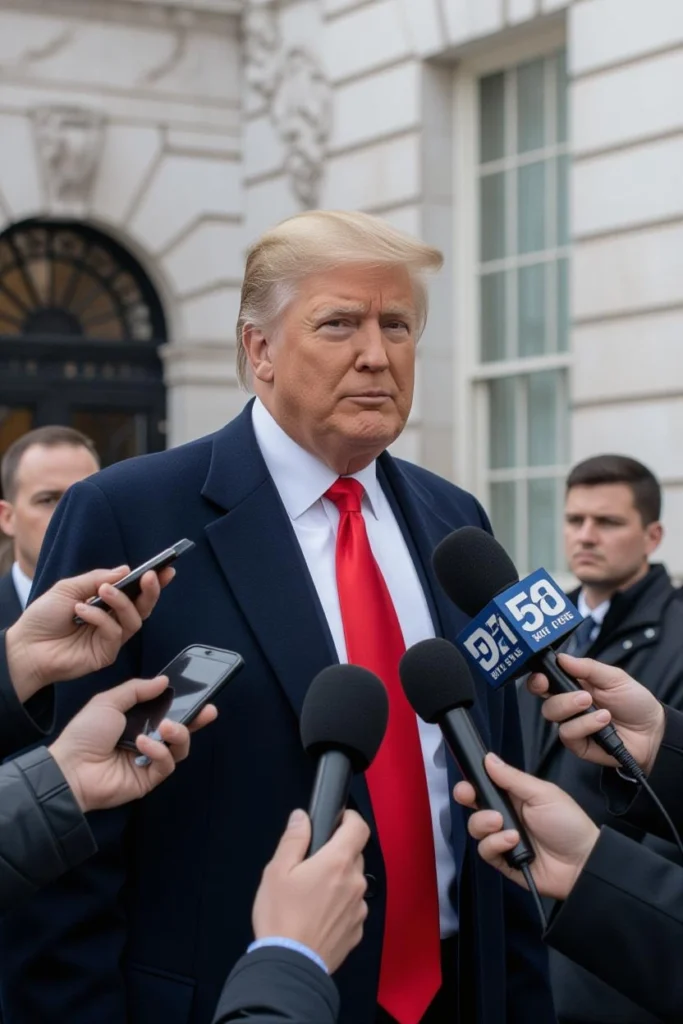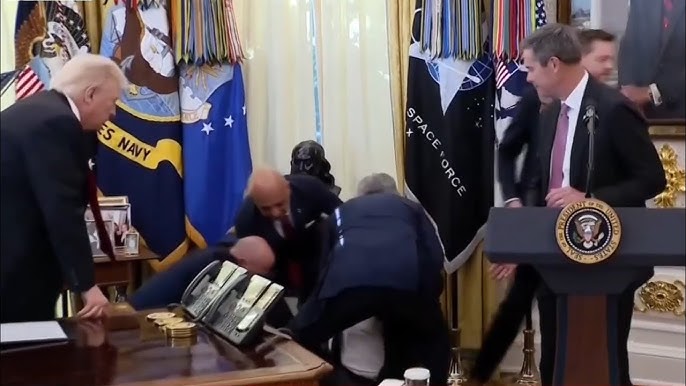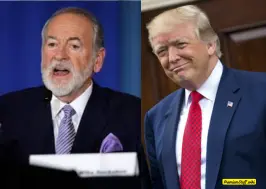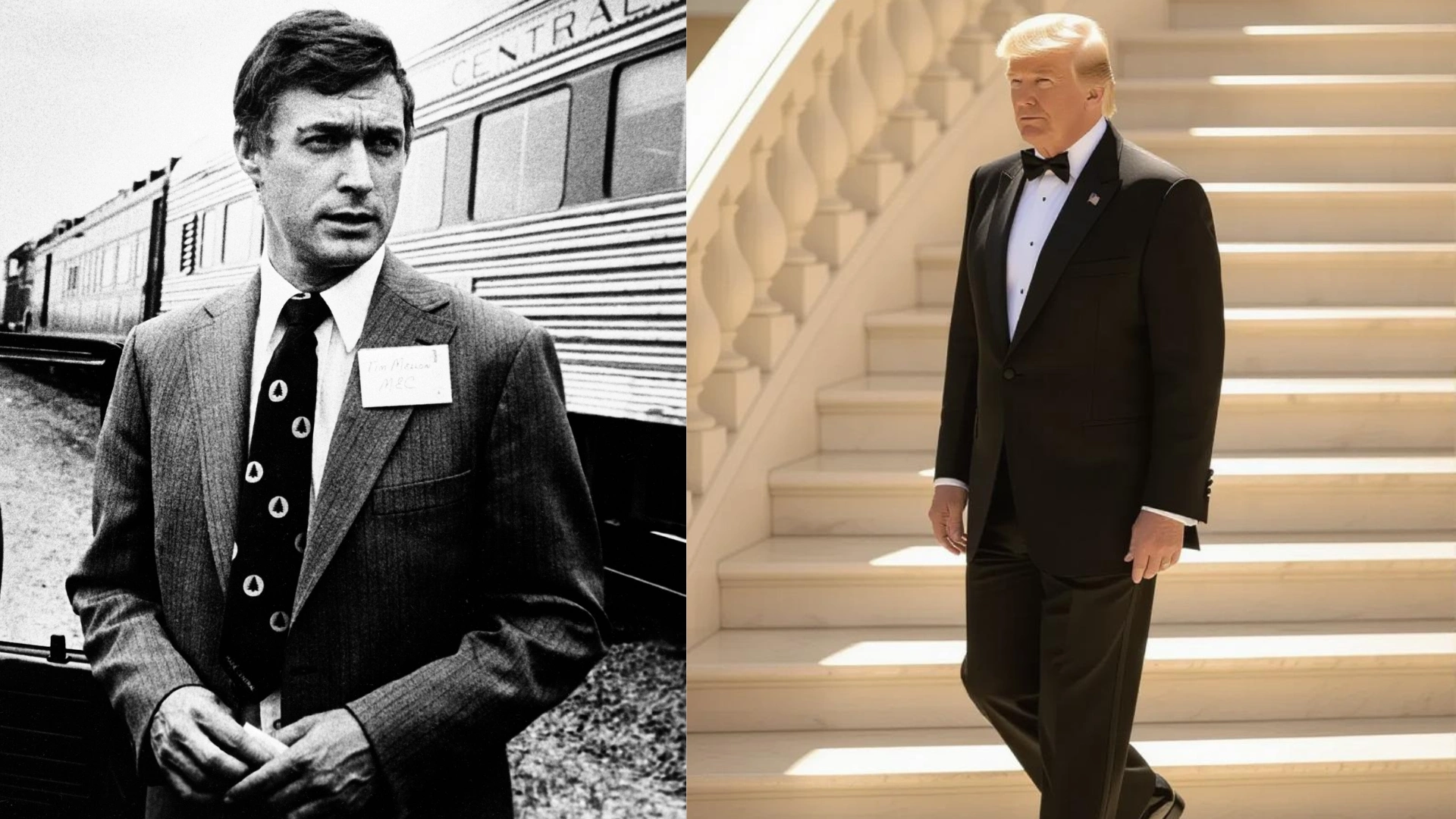Trump Reveals ‘Perfect’ MRI Scan During Unusual Second Walter Reed Visit

A Surprising Revelation at 30,000 Feet
President Donald Trump has disclosed that he received an MRI scan during his recent visit to Walter Reed National Military Medical Center, describing the results as “perfect” in an impromptu briefing with reporters aboard Air Force One on Monday .
The 79-year-old commander-in-chief broke the news while en route to Tokyo, marking the first time he has provided any specific reason for his second medical examination this year—a departure from the traditional presidential cadence of a single comprehensive annual physical .
“I did. I got an MRI. It was perfect,” Trump stated, growing more animated as he continued. “I gave you the full results. We had an MRI, and the machine, you know, the whole thing, and it was perfect” .
When pressed by journalists about what specific health concern prompted the sophisticated imaging scan, the president declined to provide details, redirecting questions to his physicians. “You could ask the doctors,” Trump said, noting that medical professionals were traveling with him on his Asia trip .
The White House Health Narrative
The revelation about the Trump MRI adds another layer to the ongoing public discussion about the health of the oldest president ever inaugurated in U.S. history . Earlier this month, following Trump’s Walter Reed visit, White House physician Dr. Sean Barbabella had issued a statement declaring the president was in “exceptional health” after what he described as a “routine semiannual physical” .
That official report mentioned Trump had received “advanced imaging, laboratory testing and preventative health assessments” as part of his “ongoing health maintenance plan,” but did not specify that an MRI was conducted . The White House summary noted “stable metabolic, hematologic, and cardiac parameters” and mentioned the president had received updated COVID-19 and flu shots in preparation for international travel .
Trump enthusiastically endorsed his physician’s assessment during his Air Force One comments, claiming his doctors had delivered “some of the best reports for the age, some of the best reports they’ve ever seen” . He made a curious connection between his health and his political future, adding, “If I didn’t think it was going to be good, either, I would let you know negatively, I wouldn’t run. I’d do something” .
Medical Context : Beyond the ‘Perfect’ MRI
The Trump MRI announcement comes against the backdrop of several visible health issues that have drawn public attention in recent months .
This past July, the White House announced Trump had been diagnosed with chronic venous insufficiency after he noticed swelling in his legs . The condition, which affects about 150,000 people annually with risk increasing with age, occurs when valves inside certain veins malfunction, allowing blood to pool in the veins . At the time, press secretary Karoline Leavitt was careful to note there were “no signs of deep vein thrombosis or arterial disease,” which can represent serious complications of the condition .
The president has also repeatedly appeared with noticeable bruising on his right hand, which he has at times seemed to cover with heavy makeup . Dr. Barbabella has attributed this bruising to “frequent handshaking” combined with Trump’s use of aspirin, which can thin the blood and increase bruising as part of what the physician called a “standard cardiovascular prevention regimen” .
What an MRI Reveals—And What Remains Unknown

A magnetic resonance imaging (MRI) scan uses powerful magnets and radio waves to create detailed images of organs and structures inside the body . Unlike standard X-rays or CT scans, MRIs provide exceptional detail of soft tissues, including the brain, muscles, joints, and blood vessels .
Medical experts note that while MRIs can be used to monitor a range of conditions, they are not typically part of a standard routine physical examination . The scan can help diagnose everything from joint injuries and brain abnormalities to cardiovascular issues, but requires specific medical justification due to its cost and sophistication .
The disclosure has sparked speculation among health observers because Trump did not reveal which part of his body was scanned or what specific concern doctors were investigating . The absence of these details has left room for interpretation, particularly given the president’s known vein condition and his age .
A History of Health Transparency Questions
This is not the first time President Trump’s approach to health transparency has generated discussion. His recent Walter Reed visit marked his second medical exam this year, following a similar evaluation in April . During that previous examination, his physician also stated Trump was in “excellent health” .
The White House has maintained that both visits were routine, though the frequency represents a departure from the typical presidential practice of a single comprehensive annual physical . The recent inclusion of an MRI—now publicly disclosed by the president himself rather than through official medical reports—adds another dimension to this pattern .
Online commentators have questioned the narrative, with some noting that MRI scans are not ordinarily performed during routine physicals without specific clinical indications . The White House has not yet provided additional technical details about the scan or its medical justification beyond the president’s “perfect” characterization .
The Intersection of Health and Politics
For any president, but particularly one of advanced age, health disclosures carry significant political implications . Trump’s comments connecting his health assessment to his potential political future—”I wouldn’t run” if there were negative results—highlight how deeply medical condition intertwines with leadership stability in the public mind .
The conversation aboard Air Force One took place against the backdrop of a week-long trip to Asia, a demanding international travel schedule for any world leader . Such trips typically involve rigorous schedules, time zone changes, and diplomatic pressures that test stamina at any age .
As the 2028 presidential election cycle begins to attract speculation, despite being two years away, questions about the health and endurance of potential candidates take on increased significance . During the same Air Force One conversation, Trump notably refused to rule out a bid for a third presidential term, despite the 22nd Amendment’s limitation of presidents to being elected twice .
What Comes Next?
For now, the White House appears to be maintaining that the Trump MRI was simply part of comprehensive health maintenance for a president who remains in “exceptional health” . The president’s physicians have not indicated any need for follow-up scans or specialized treatment beyond management of his previously disclosed venous condition .
What remains unclear is whether additional information about the MRI or the president’s health will be formally released through official medical channels, or if the Air Force One revelation will stand as the primary communication on the matter .
As with many aspects of the Trump presidency, the disclosure raised as many questions as it answered—offering a definitive statement about results while leaving the context and concerns that prompted the scan largely unexplained . For a public accustomed to detailed medical summaries of presidential health, the “perfect” MRI joins a growing list of health disclosures that balance between transparency and mystery.








